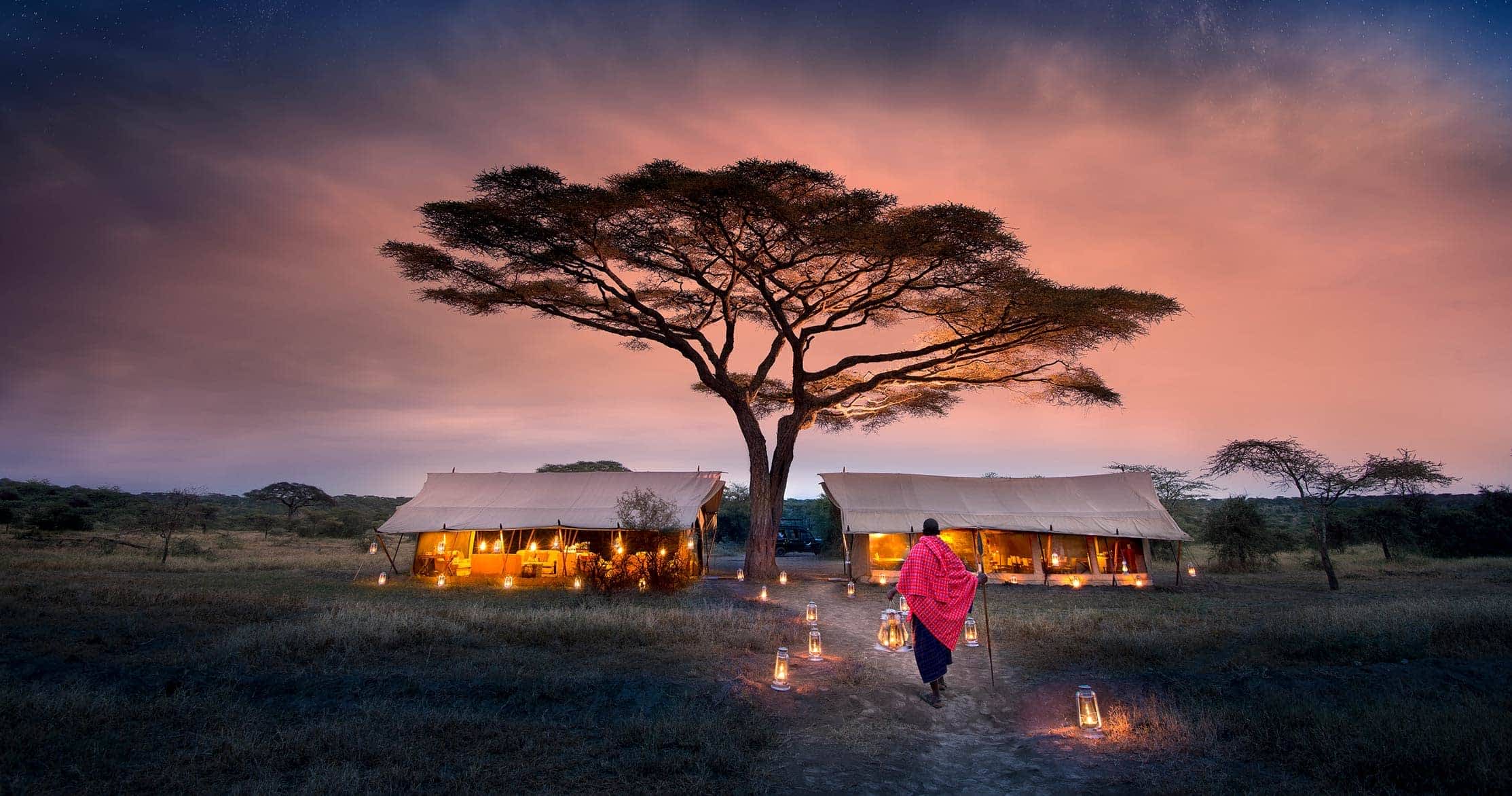
Tanzania’s oldest and most popular National Park, also a World Heritage
Site and recently proclaimed a 7th world wide wonder, the Serengeti is famed
for its annual migration. Serengeti National Park is unquestionably the
best-known wildlife national park in the world, unique for its natural beauty
and scientific value. With more than two million Wildebeest, half a million
Thomson’s Gazelle, and a quarter of a million Zebra, it has the greatest
concentration of plains game in Africa. The Wildebeest and Zebra moreover form
the star cast of a unique spectacular – the annual Serengeti migration.
Located in northwest of Arusha, lying in a high plateau between the
Ngorongoro highlands, Kenya and Tanzania borders and extending almost to Lake
Victoria to the West. There is a variety of scenery, which includes the plains,
lakes, hills and the rocky outcrops called kopjes. Hot air balloon safaris,
Maasai rock paintings, musical rocks and visit neighboring attractions;
Ngorongoro Crater, Olduvai Gorge, Oldonyo Lengai volcano and Lake Natron’s
flamingos.
HABITAT AND WILDLIFE
A unique combination of diverse habitats enables it to support more than
30 species of large herbivores and nearly 500 species of birds. Its landscape,
originally formed by volcanic activity, has been sculptured by the concerted
action of wind, rain and sun. It now varies from open grass plains in the
south, savannah with scattered acacia trees in the center, hilly, wooded
grassland in the North, to extensive woodland and black clay plains to the West.
Small rivers, lakes and swamps are scattered throughout. In the south-east rise
the great volcanic massifs and craters of the Ngorongoro Highlands. Each area
has its own particular atmosphere and wildlife.
SERENGETI MANAGEMENT ZONE
The Park can be divided into 3 sections. The popular southern or central
part (Seronera Valley), is what the Maasai called the “Serengit”, the land of
endless plains. It’s classic savannah, dotted with acacias and filled with
wildlife. The western corridor is marked by the Grumeti River, and has more
forests and dense bush. The North, Lobo area, meets up with Kenya’s Masai Mara
Reserve, is the least visited section.
SERENGETI GREAT MIGRATION
The Serengeti hosts the largest terrestrial mammal migration in the
world, which helps secure it as one of the Seven Natural Wonders of Africa, and
one of the ten natural travel wonders of the world. Each year around the same
time the circular great Wildebeest migration begins in the Ngorongoro area of
the Southern Serengeti of Tanzania. This migration is a natural phenomenon
determined by the availability of grazing. It lasts from approximately January
to March, when the calving season begins – a time when there is plenty of rain
ripened grass available for the 750,000 Zebra that precede 1.2 million
Wildebeest and the following hundreds of thousands of other plains game.
WHY VISIT SERENGETI NATIONAL PARK
v
A unique
savanna ecosystem with two million big mammals,comprising essentially all the
plain species in East Africa.
v
Big migrations
are outstanding natural events
v
Home of big
cats and predators
v
Great Natural
Beauty – vast open, grassy plain, savanna environment dotted with thorn bushes
or trees and occasional cluster of kopjes.
v
An extremely
popular park
WHAT TO DO:
v
Game drive
v
Balloon Safari
– an unrivalled experience,
v
A short Nature
trail in Naabi Hill
v
Guided hiking
through the savanna
v
Camping Safaris
GETTING THERE:
v
Easy drive from
Arusha or Lake Manyara
v
Daily scheduled
flight from Arusha, Zanzibar or Dar es Salaam
BEST TIME TO VISIT
All Year around, the dry season (from late June to September) offers the
best wildlife viewing in general- with the wildebeest migration as its absolute
highlight. The timing of the migration varies every year (the best chance of
seeing it is during June and July) while the wildebeest calving is from late
January to February.